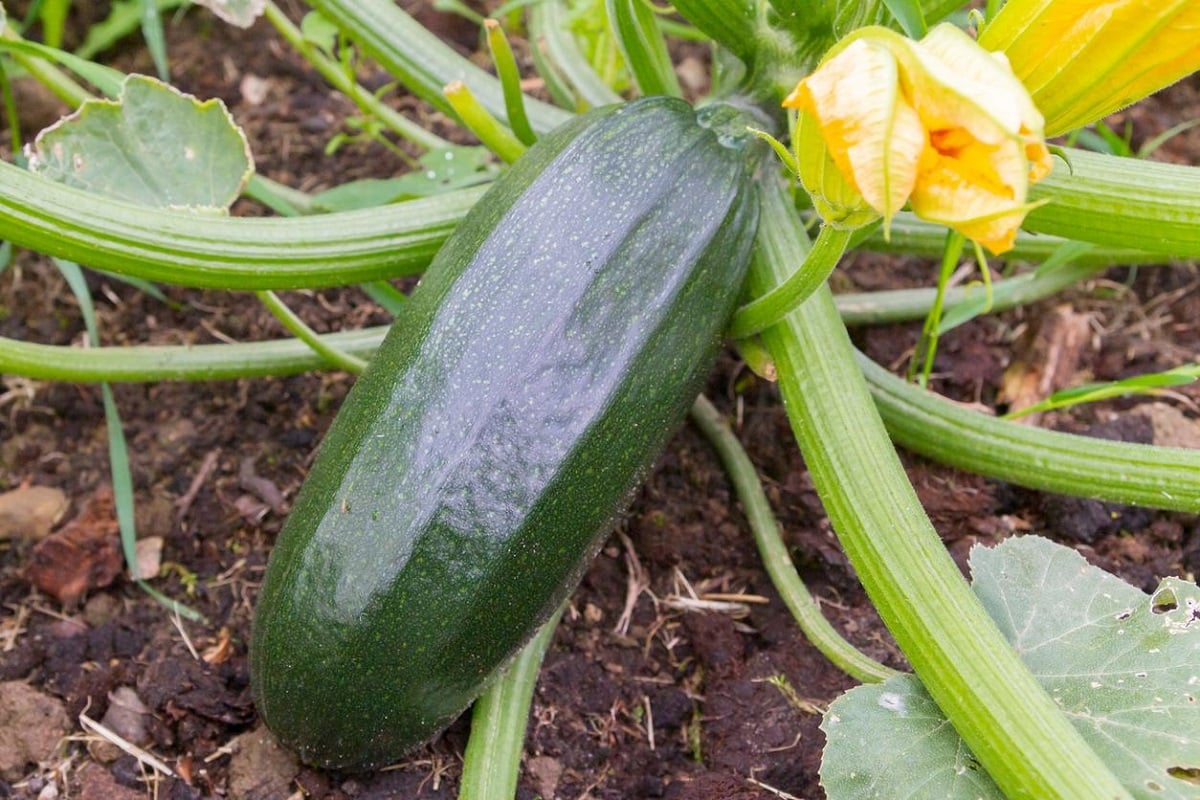
Zucchini, known botanically as Cucurbita pepo, is a vegetable belonging to the Cucurbitaceae family that has become very popular in recent years. The pioneers in cultivating this nutritious, delicious and low-calorie vegetable were the Arabs. The main courgette producing countries in the world are currently North America, Italy, the Netherlands and Spain. It is very versatile in the kitchen, it is used in tortillas, tempura, grilled, stuffed and more. Many people who start with the urban dead have doubts about when are courgettes planted.
For this reason, we are going to dedicate this article to telling you when to plant courgettes, how you should do it and the best tricks for it.
When are courgettes planted?

Squash in temperate regions should be planted in the spring or early dry season in climates that only have cool, wet seasons and hot, dry seasons.
In severe winter climates, frosts can still occur in early spring, in which case it's best to wait until they're over. It must be remembered that if they are to be grown outdoors, planting them too early and then having to wait longer than transplant time will not produce any harvest.
Even if there is a warm place to keep the seedbed, it is not recommended to sow the seeds about 1 month before transplanting. They need high temperatures and good light to grow. Therefore, it is recommended to sow in spring, preferably in April and May. Before sowing it in the seedbed.
It is a high-climate crop with extremely poor tolerance to low temperatures. They need 10 to 12 hours of light. The optimum soil temperature for germination is 20 to 25 ºC. Below 10ºC its development stops, and above 40ºC an imbalance of plants and temperature begins.
How courgettes are planted

Growing zucchini is easy because it only needs warm weather to sprout. You can sow zucchini directly in the soil of your garden with two or three courgette seeds per hole, 2 cm deep.
The seeds are sown together from March to September so that when they sprout they easily break through the soil crust. When placing them, cover them with 4 cm of soil. After germination, grow one seedling per well, select the strongest and discard the rest.
Zucchini adapts to any type of soil, although it prefers deep and well-drained ones. On the other hand, simple fertilizers are the most used, soluble and liquid.
As for watering, if you are going to grow courgettes in your garden, you should know that the plant needs moisture, so you should water it frequently when the first fruits begin to appear. However, it is not recommended to water excessively at the beginning of sowing, since waterlogging does not favor the correct development of the plant.
When transplanting, water deeply, letting it take root well, until the leaves look decayed, then another deep watering will have to be done. Repeat these steps until the flowers start to grow. From then on, you want to keep the soil moist, but not waterlogged.
In zucchini, you should remove secondary shoots as soon as possible. If the garden of the house has a good reception for the zucchini, can be harvested 40 days after sowing and continue for another 40 days depending on plant growth. Harvest the zucchini every day or every other day.
Land preparation
Zucchini is less demanding on the soil and adapts easily to all types of substrates, although it prefers those that are rich, deep and well drained. Also, the soil must contain enough organic matter as it has high nutrient requirements.
The optimal pH range is between 5.6 and 7.0 It is moderately tolerant to salt in soil and irrigation water, but plants can find it difficult to absorb water if the salt concentration is too high.
They pair well with corn, beans, cabbage, lettuce, radishes, Swiss chard, tomatoes, and arugula. They do not get along well with potatoes and, in general, with the vegetables of the family (fruit vegetables) such as cucumbers, watermelons, melons, pumpkins or tomatoes, since they compete for sunlight, water and nutrients.
How to grow zucchini step by step

You must remove weeds and residue from previous crops, as well as various debris to ensure your zucchini is getting the proper amount of nutrients. All plants must be uprooted to prevent regrowth.
Remove the soil with a rake and let it be well ventilated. Moisten the soil before planting zucchini so you will benefit the root system of the zucchini. Also, by moistening the soil, it reduces the risk of hydraulic loosening of seeds.
Fertilize the soil by mixing the fertilizer to a depth of 5 cm. To do this, create small mounds and plant 2-3 seeds 3-5 cm deep. When you're done, cover them lightly.
As a plant that requires a lot of space, a minimum distance of 50 cm from each mound is recommended. Choose the healthiest and strongest seedlings. The seeds will sprout in a few days. If more than one seed germinated in each hole, keep the strongest one. To do this, don't pull on the weak ones as it will damage the leaves. A simple pruning to the ground will suffice.
One of the characteristics of the zucchini plant is that the same individual has mostly male and female flowers, so at least two plants are required for pollination to form fruits.
Pruning is necessary to limit the excessive growth of the bush and favor the production of fruits.. Likewise, you should remove the leaves that are in poor condition throughout their life cycle.
Sometimes it is convenient to clean the flowers because once their function has been fulfilled, they fall and rot very easily, which is a source of diseases. Again, regular washing of the fruit is recommended. This includes inhibiting fruit that has been damaged by disease, deformity, or overgrowth.
I hope that with this information you can learn more about when to plant courgettes and how to do it.